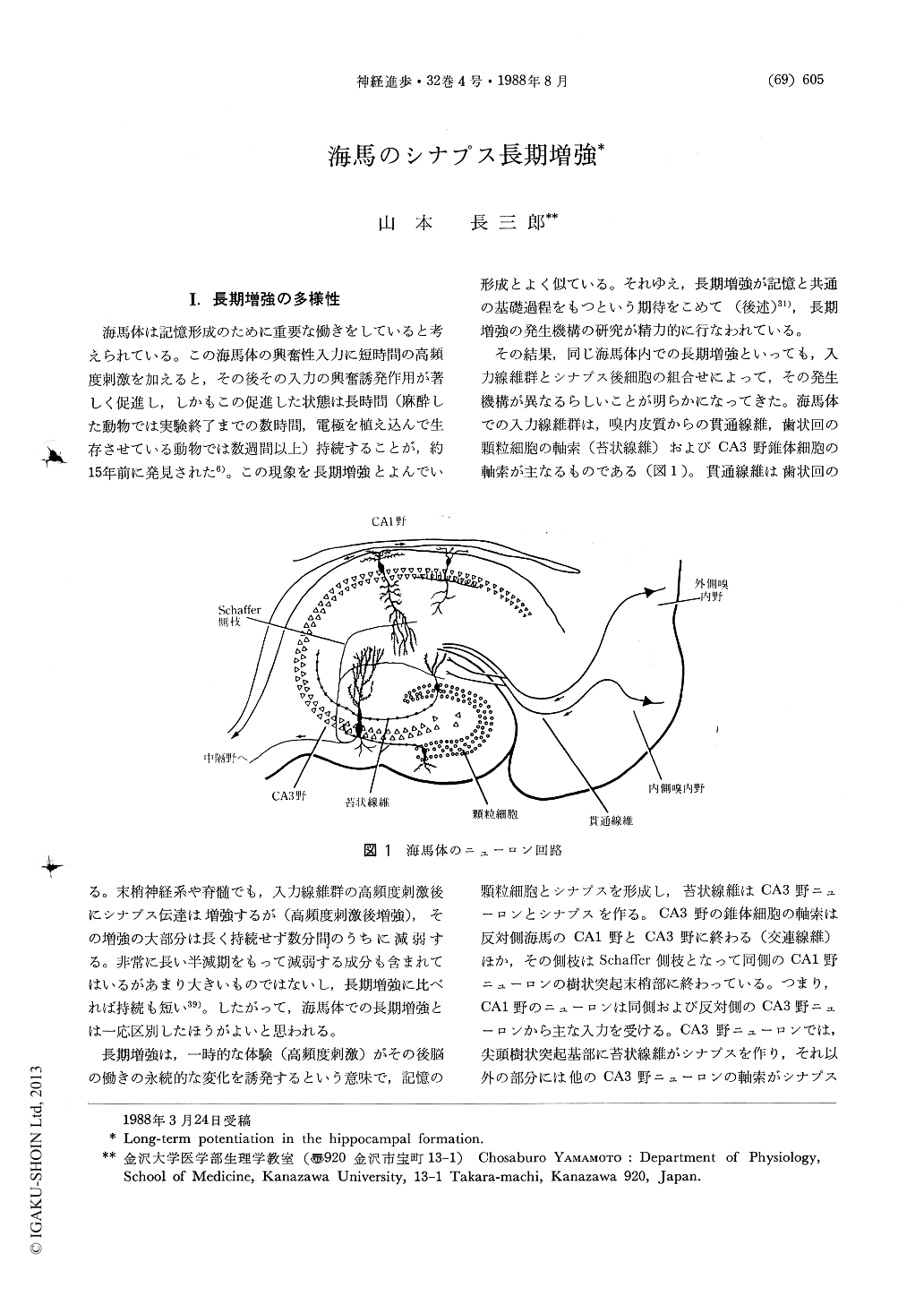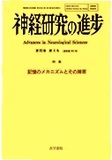Japanese
English
- 有料閲覧
- Abstract 文献概要
- 1ページ目 Look Inside
I.長期増強の多様性
海馬体は記憶形成のために重要な働きをしていると考えられている。この海馬体の興奮性入力に短時間の高頻度刺激を加えると,その後その入力の興奮誘発作用が著しく促進し,しかもこの促進した状態は長時間(麻酔した動物では実験終了までの数時間,電極を植え込んで生存させている動物では数週間以上)持続することが,約15年前に発見された6)。この現象を長期増強とよんでいる。末梢神経系や脊髄でも,入力線維群の高頻度刺激後にシナプス伝達は増強するが(高頻度刺激後増強),その増強の大部分は長く持続せず数分間のうちに減弱する。非常に長い半減期をもって減弱する成分も含まれてはいるがあまり大きいものではないし,長期増強に比べれば持続も短い39)。したがって,海馬体での長期増強とは一応区別したほうがよいと思われる。
長期増強は,一時的な体験(高頻度刺激)がその後脳の働きの永続的な変化を誘発するという意味で,記憶の形成とよく似ている。それゆえ,長期増強が記憶と共通の基礎過程をもつという期待をこめて(後述)31),長期増強の発生機構の研究が精力的に行なわれている。
A tetanic stimulation of an excitatory input to the hippocampal formation induces a long-lasting potentiation of synaptic transmission through the tetanized pathway. This phenomenon is called long-term potentiation (LTP). In the subfields CA1 and dentate gyrus, the LTP shows two features : input-specificity and cooperativity. The induction of the LTP in these fields is blocked by D-2-amino-5-phosphono valerate (D-APV), an antagonist of N-methyl-D-aspartate (NMDA) re-ceptors. The above features of the LTP can be explained by the voltage-dependent blockade ofNMDA receptor channels by Mg2+.The LTP of synapses between mossy fibers and CA3 neurons is insensitive to D-APV. It is possible therefore that NMDA receptors are not involved in induction of the LTP in these synapses. Our experiments were summarized in which anattempt was made to determine the site of pri-mary changes underlying the LTP. Possible mechanisms for induction of the LTP were discussed.

Copyright © 1988, Igaku-Shoin Ltd. All rights reserved.


